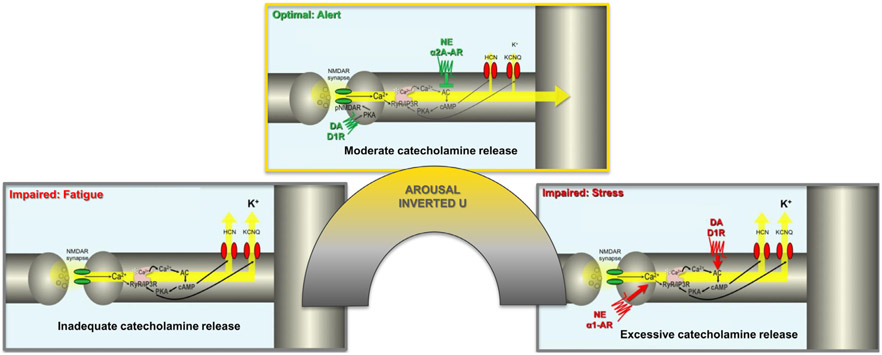FIGURE 4.
Catecholamine effects on prefrontal cortical connectivity. Catecholamines have powerful effects on the connectivity of prefrontal cortical recurrent excitatory circuits needed to generate top-down goals for action. These newly evolved synapses rely on N-methyl-D-aspartate (NMDA) receptors for neurotransmission. They also contain the molecular machinery to rapidly weaken connections through feedforward calcium-cAMP signaling, opening nearby potassium (K+) channels to functionally disconnect the circuit. Moderate levels of catecholamine release strengthen connectivity, through alpha-2A-AR inhibiting cAMP opening of K+ channels. D1R within the synapse may also enhance firing by phosphorylating NMDA receptors to maintain them within the synapse. In contrast, excessive catecholamine release weakens connectivity by driving calcium-cAMP opening of K+ channels through alpha-1AR and D1R actions at locations away from the synapse. For more detailed discussion of this topic, see the following video on how stress and fatigue can alter prefrontal function: https://www.youtube.com/watch?v=vdDvChLuQsA&t=6s.

